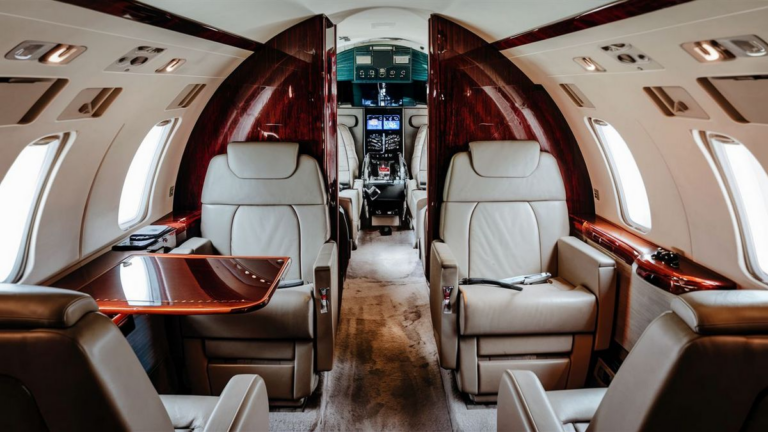Looking to lease a business aircraft? We’ve got you covered with a comprehensive guide to help you navigate the process seamlessly. Whether you’re a seasoned aviation professional or a first-time lessee, understanding the ins and outs of aircraft leasing is crucial for making informed decisions that align with your business objectives.
Understanding Your Needs
Before diving into the leasing process, it’s essential to assess your specific requirements and preferences. Consider factors such as the distance of your typical flights, the number of passengers you’ll be transporting, desired amenities onboard, and budget constraints. By clarifying your needs upfront, you’ll be better equipped to narrow down your options and find the perfect aircraft for your business.
Choosing the Right Aircraft
Once you’ve identified your requirements, it’s time to explore the available aircraft options. From light jets to long-range business jets, the market offers a wide range of models to suit various needs. Evaluate factors such as cabin size, range, speed, and operating costs to determine which aircraft best aligns with your business goals.
Researching Lease Providers
When leasing a business aircraft, selecting the right leasing provider is paramount. Conduct thorough research to identify reputable companies with a proven track record in aircraft leasing. Look for providers that offer transparent lease terms, competitive pricing, and a fleet of well-maintained aircraft. Reading customer reviews and seeking recommendations from industry peers can also help you make an informed decision.
Negotiating Lease Terms
Once you’ve identified a potential leasing provider, it’s time to negotiate the lease terms. Work closely with the provider to ensure that the terms align with your needs and preferences. Key considerations include lease duration, monthly payments, maintenance responsibilities, insurance coverage, and termination clauses. Negotiating favorable terms can help you maximize the value of your lease agreement and minimize potential risks.
Reviewing Legal Documents
Before finalizing the lease agreement, it’s crucial to review all legal documents carefully. Seek assistance from legal professionals with experience in aviation law to ensure that the terms are fair and compliant with regulatory requirements. Pay close attention to clauses related to liability, insurance, maintenance standards, and dispute resolution. Clear and comprehensive legal documentation is essential for protecting your interests throughout the lease term.
Managing Operational Logistics
Once the lease agreement is in place, it’s time to focus on the operational logistics of managing your leased aircraft. Coordinate with the leasing provider to schedule maintenance inspections, arrange for fueling services, and handle any logistical challenges that may arise during the lease term. Effective operational management is essential for ensuring the safety, reliability, and efficiency of your business aircraft.
Ensuring Compliance
Throughout the lease term, it’s crucial to maintain compliance with regulatory requirements governing aircraft operations. Stay informed about relevant regulations issued by aviation authorities and ensure that your leased aircraft meets all applicable safety and security standards. Failing to comply with regulatory requirements can result in penalties, fines, or even the termination of your lease agreement.
Optimizing Financial Efficiency
Leasing a business aircraft offers various financial benefits, including flexibility, tax advantages, and reduced upfront costs. Work with financial advisors to optimize the financial efficiency of your lease arrangement. Explore options such as tax depreciation, leasing incentives, and financing structures to minimize costs and maximize returns on your investment in business aviation.
Leasing a business aircraft is a strategic decision that can enhance your company’s productivity, flexibility, and competitiveness. By following the steps outlined in this guide, you can navigate the leasing process with confidence and secure a lease agreement that meets your business needs. Remember to prioritize safety, compliance, and operational efficiency throughout the lease term to maximize the value of your investment in business aviation.
Understanding Aviation Regulations
Before finalizing your decision on leasing a business aircraft, it’s crucial to have a solid understanding of aviation regulations. Familiarize yourself with rules and requirements set forth by aviation authorities pertaining to aircraft leasing, operation, and maintenance. This knowledge will not only help you ensure compliance but also prevent any legal complications down the line.
Regulatory Compliance Checklist
Creating a regulatory compliance checklist can streamline the process of ensuring adherence to aviation regulations. Include items such as pilot licensing requirements, aircraft registration, airworthiness certificates, and maintenance documentation. Regularly review and update this checklist to stay current with any regulatory changes.
Training and Certification
Investing in training and certification programs for your flight crew and operational staff is essential for maintaining regulatory compliance. Ensure that your team receives proper training on safety protocols, emergency procedures, and regulatory requirements specific to the leased aircraft type. Well-trained personnel are critical for safe and efficient aircraft operations.
Frequently Asked Questions
| Question | Answer |
|---|---|
| Can I customize the leased aircraft? | Many leasing providers offer customization options, but this may vary depending on the terms of your lease agreement. It’s essential to discuss customization options and any associated costs with your leasing provider before finalizing the agreement. |
| What happens if the leased aircraft requires maintenance? | The responsibility for maintenance may vary depending on the terms of your lease agreement. In some cases, the leasing provider may handle maintenance arrangements, while in others, you may be responsible for coordinating maintenance activities. Review the lease terms carefully to understand your maintenance responsibilities. |
| Are there any insurance requirements for leased aircraft? | Yes, most lease agreements require lessees to maintain comprehensive insurance coverage for the leased aircraft. This typically includes liability insurance, hull insurance, and other applicable coverage. Ensure that you understand the insurance requirements specified in your lease agreement and obtain the necessary coverage. |






